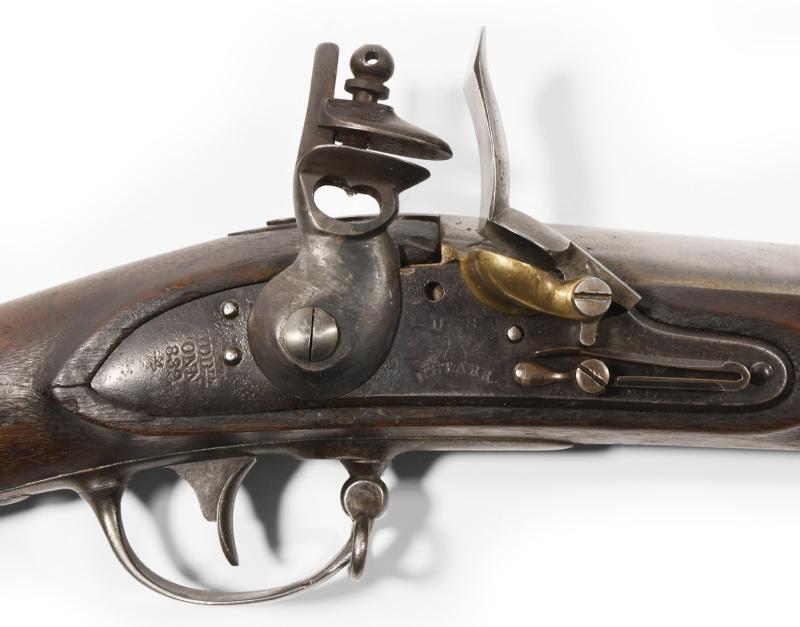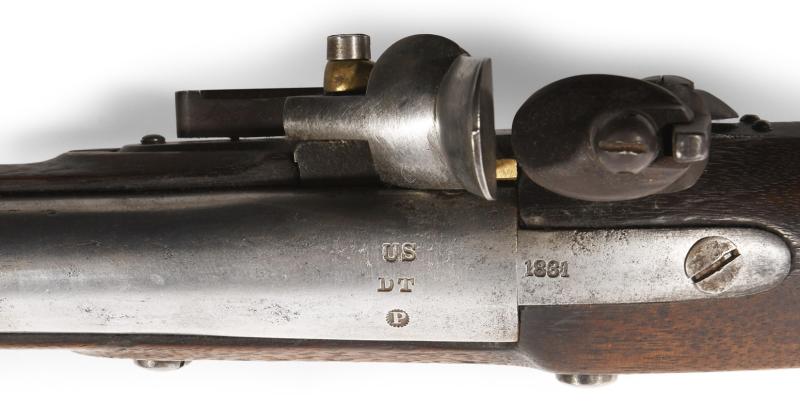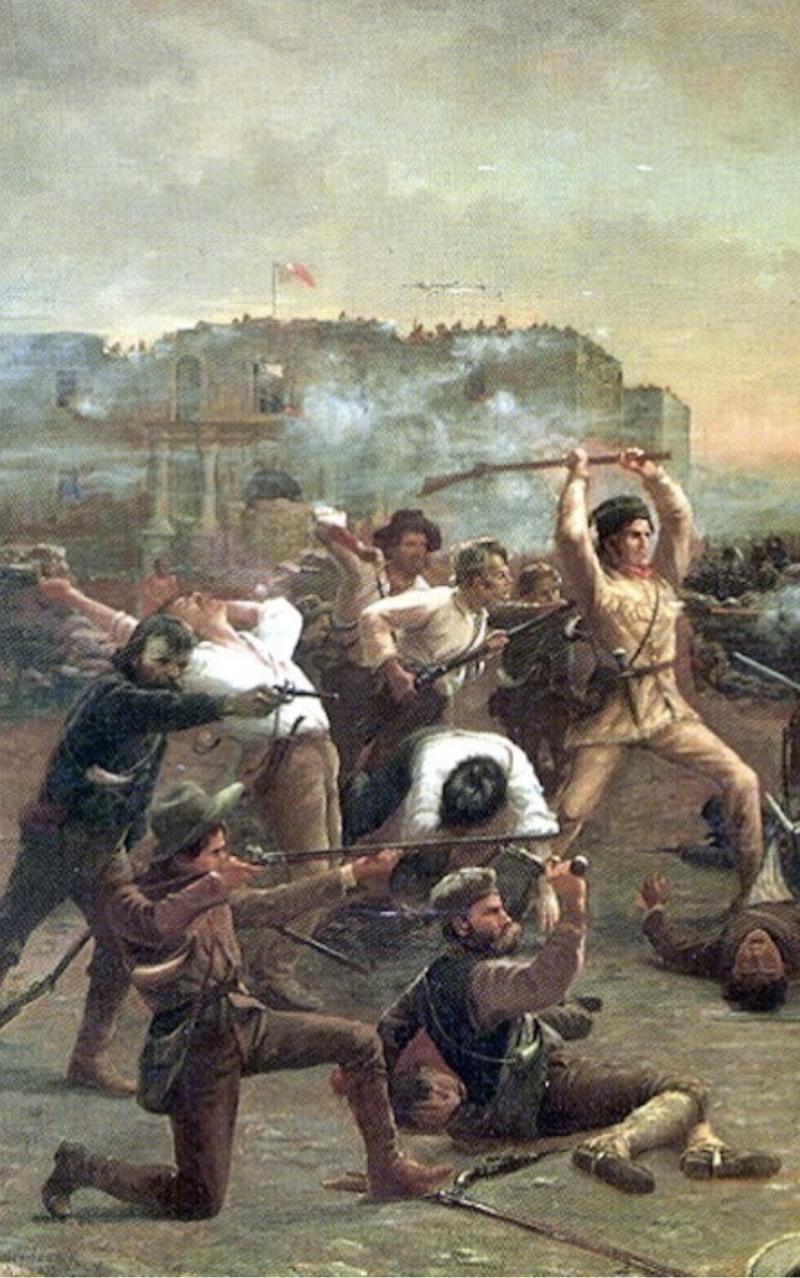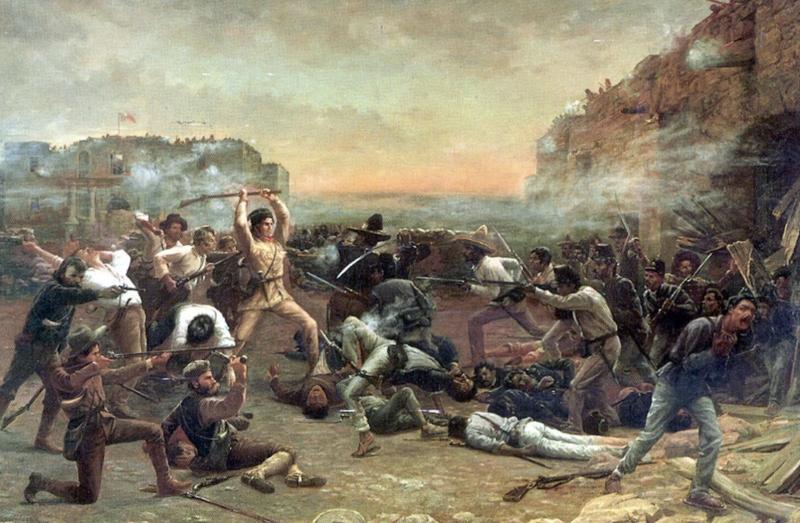A Very Fine American US Army Issue Infantry Flintlock Musket Used In the Texas Revolution, The Mexican-American War & The US Civil War Eras.
A fine, untouched flintlock example of a Nathan Starr model 1816 musket. This particular example was made for the US Army, with a barrel stamp “US + P”, with a DT for Lt. Daniel Taylor US Army. He served from 1831 to 1850. The lock is stamped US & the maker, N.Starr, and dated 1832.
The model 1816 flintlock musket was the replacement for the model 1812. The 1816 had a similar barrel length and bore to the 1812, but featured a longer lock plate, a shorter trigger guard, and a longer bayonet. The 1816 was used by Texans during the Texas Revolution and by the US Army during the Mexican-American War. It was also used in the early days of the American Civil War. The large majority of model 1816’s had been converted to percussion by 1860, for its increased reliability and weather resistance. Many of the unconverted muskets ended up in the south, carried by confederate soldiers in the first years of the Civil War.
On March 1, 1836 the second Texas convention opened. This time, the representatives voted to declare Texas a free, independent and sovereign republic. They wrote a constitution based on the Constitution of the United States. They created a government. David Burnet became president. Sam Houston was to continue as commander of Texas forces.
The siege at the Alamo
On the second day of the convention, a letter came from the Alamo in San Antonio. The letter was addressed to the people of Texas and all Americans. The commander of Texas forces at the Alamo, Lieutenant Colonel William Barrett Travis, wrote:
“I am besieged, by a thousand or more of the Mexicans under Santa Anna — I have sustained a continual Bombardment & cannonade for 24 hours & have not lost a man — The enemy has demanded a surrender at discretion, otherwise, the garrison are to be put to the sword, if the fort is taken — I have answered the demand with a cannon shot, & our flag still waves proudly from the walls — I shall never surrender or retreat.
The letter from the Alamo closed with the words: "Victory or Death”
Representatives at the convention wanted to leave immediately to go to the aid of the Texans at the Alamo. But Sam Houston told them it was their duty to remain and create a government for Texas. Houston would go there himself with a small force.
The help came too late for the 189 men – perhaps even more – at the Alamo. The defenders included some Tejanos, or Hispanic Texans, and the famed frontiersman Davy Crockett. Santa Anna's forces captured the mission on March 6. When the battle ended, not a single one of the defenders was still alive.
Sam Houston ordered all Texas forces to withdraw to the northeast — away from the Mexican army.
One group of Texans did not move fast enough. Santa Anna trapped them. He said the Texans would not be harmed if they surrendered. They did. One week later, they were marched to a field and shot. Only a few escaped to tell the story.
Santa Anna then moved against Sam Houston. He was sure his large army could defeat the remaining Texas force.
President Andrew Jackson and Sam Houston were close friends. When told of Houston's retreat, the president pointed to a map of Texas. He said: "If Sam Houston is worth anything, he will make his stand here.”
Jackson pointed to the mouth of the San Jacinto River.
The Battle of San Jacinto began at four o'clock in the afternoon. There were about 800 Texans. There were twice as many Mexicans. The Mexicans did not expect the retreating Texans to turn and fight. But they did.
Shouting "Remember the Alamo!" the Texans ran at the Mexican soldiers. Eighteen minutes later, the battle was over. Santa Anna's army was destroyed.
On May 14, 1836, Texas’ President David Burnet and General Santa Anna signed a treaty. The treaty made Texas independent from Mexico.
As with all our items it comes complete with our certificate of authenticity.
Code: 24784
2250.00 GBP





